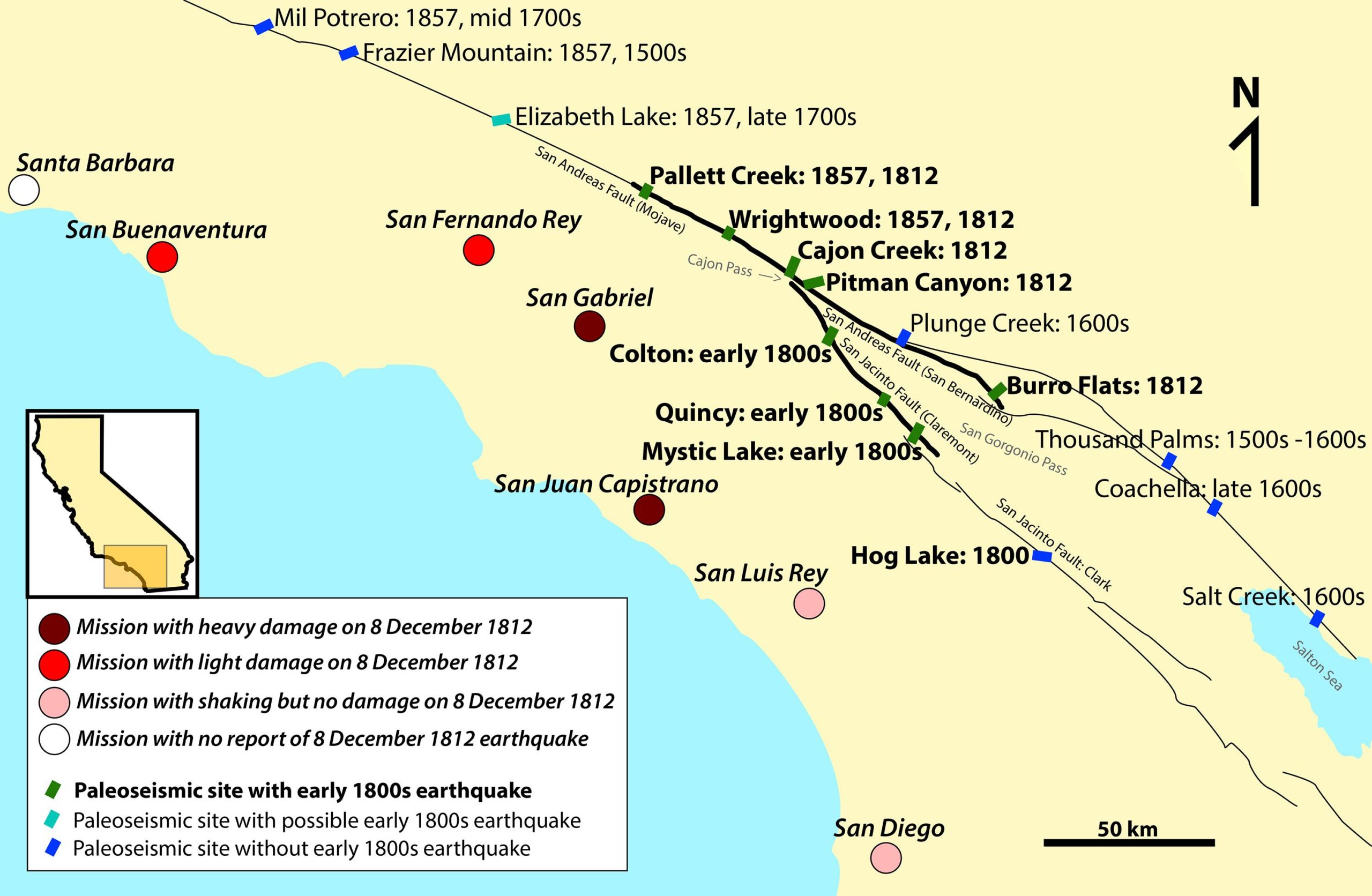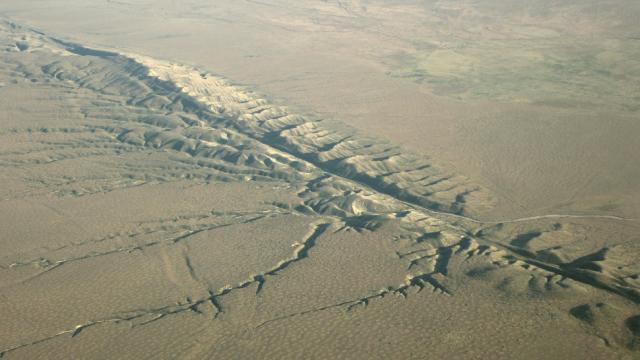A geophysicist in California says the San Andreas fault could be triggered into rupturing by the smaller San Jacinto fault nearby, causing a single devastating earthquake. Such a “joint rupture” may have happened before — and it could very well happen again.
Lead image: sanandreasfault.org
In 1812, an earthquake rocked San Juan Capistrano in southern California, damaging buildings and killing 40 people. The quake, estimated at a magnitude 7.5, started along the 130-mile (210 km) San Jacinto fault, but its energy travelled to the nearby San Andreas fault, causing it to rupture as well. For the people living on the surface, it felt like a single event, but in reality it was two faults working together to catastrophic effect.
At least that’s the scenario posited by California State University geophysicist Julian Lozos, whose new theory appears in Science Advances. Unlike other seismologists, Lozos doesn’t believe that the San Andreas fault — the primary plate boundary fault in southern California that extends for 800 miles (1,290 km) — worked alone during the 1812 earthquake. He argues that the earthquake initially began along the smaller San Jacinto, but then it spread to the San Andreas.

A map showing where records of damage were recorded in the wake of the December 1812 earthquake. Image: J. Lozos
Modern seismic records don’t exist for the 1812 quake, so Lozos used a computer to simulate the proposed double-rupture. The model was based on historical accounts of the damage and established geological evidence, including the positioning of what Lozos calls “precariously balanced rocks.” His models show that the damage inflicted by the earthquake could very well have been produced by a joint rupture event. It’s a conclusion that jibes well with the separate work of geologist Nate Onderdonk of Cal State Long Beach, who says that multi-fault quakes have been happening in California for thousands of years.
As Lozos concluded in his study, “This precedent carries the implications that similar joint ruptures are possible in the future, and that the San Jacinto fault plays a more significant role in seismic hazard in southern California than previously considered.” So in addition to a heightened risk of earthquakes, the region is at a greater risk of multi-fault quakes spread over a larger area of destruction.
But as Smithsonian notes, that doesn’t mean these earthquakes are stronger than single-fault events:
Combination earthquakes aren’t necessarily more powerful than single-fault ones, but they do travel in different ways. Instead of zipping relatively neatly along the fault line under San Bernardino, a multi-fault earthquake — even a less powerful one than the 1812 temblor — could jump right across a very densely populated region, causing even more damage than anything the San Andreas could produce alone.
Lozos’s study also means that current prediction models may be wrong. It would be wise for seismologists in the region, particularly in the cities of San Bernardino and Riverside, to take heed of this study and adjust accordingly.
[Science Advances via Smithsonian and Curbed LA]
